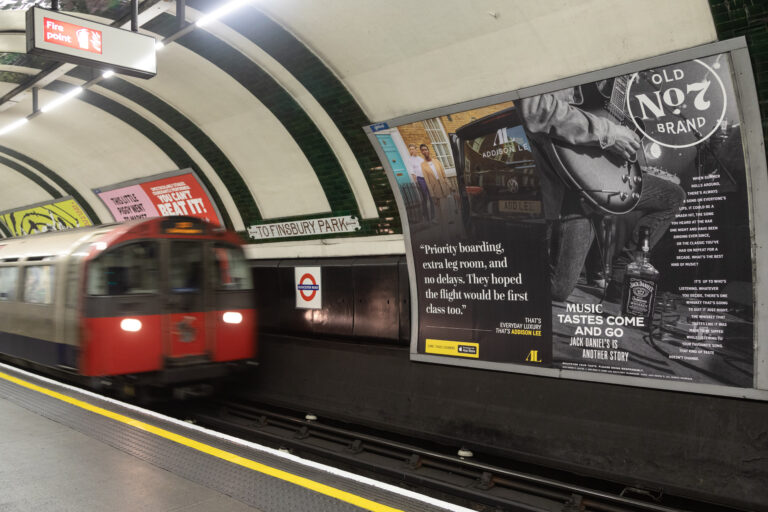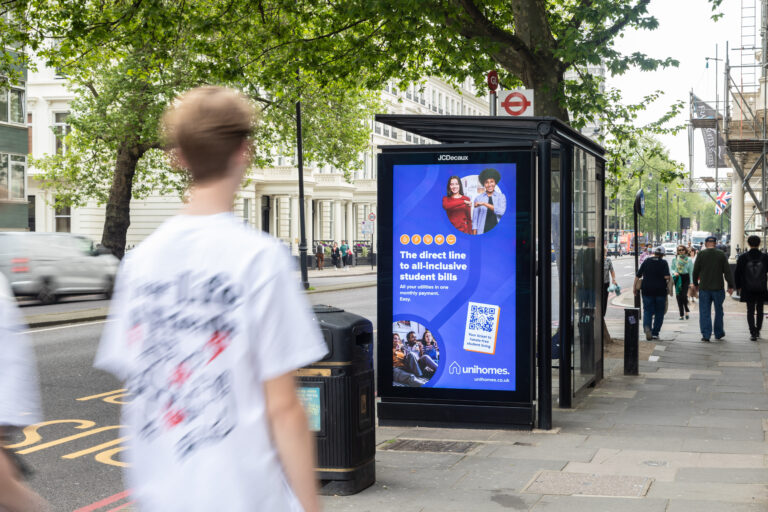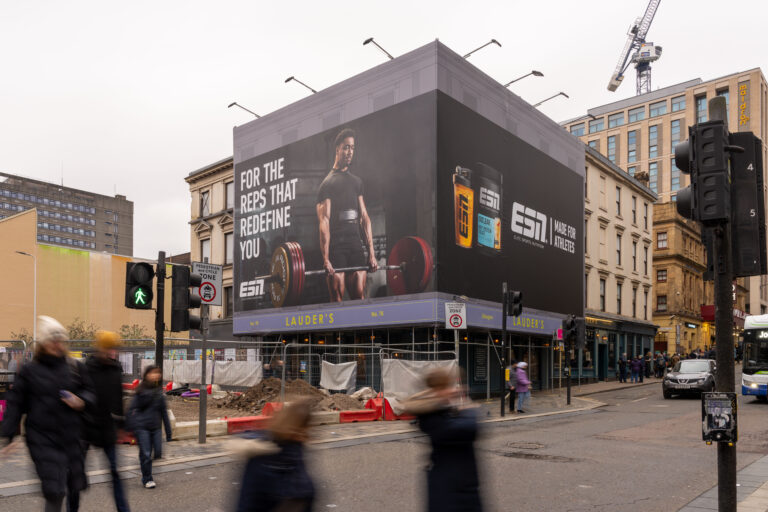Introduction
In today’s mobile-first world, a powerful new phenomenon is emerging in UK transport advertising – what we call the Connected Spend.
This represents the crucial intersection where transport Out-of-Home (OOH) advertising meets digital purchasing behaviour, creating a measurable pathway from viewing to buying that’s worth over £1 billion annually.
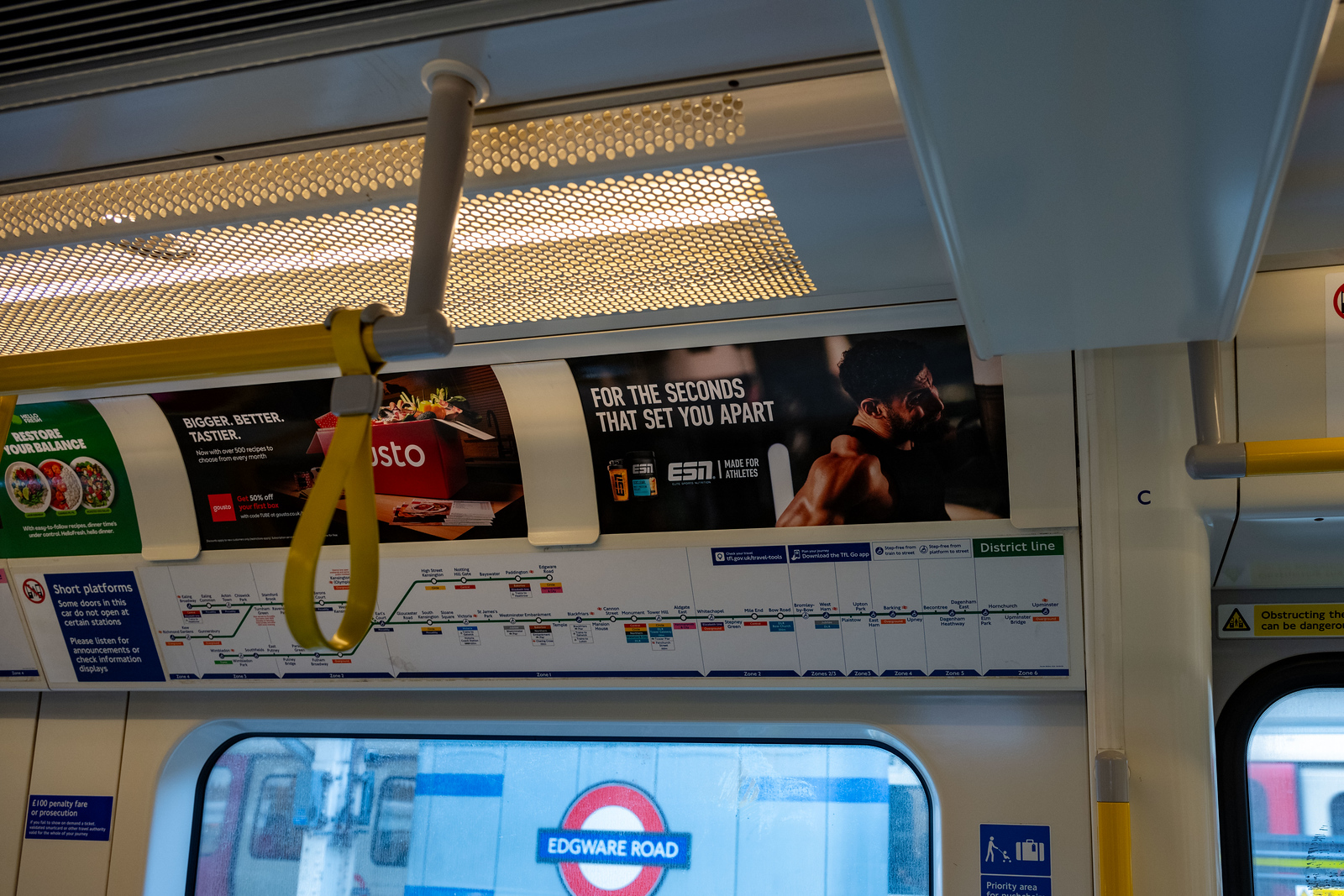
British commuters spend an average of 58 minutes daily on public transport, creating countless moments of connection between brands and consumers. As London’s Underground carries 5 million passengers each day and Manchester’s Metrolink serves over 45 million annually, this vast network of urban mobility presents an unprecedented opportunity for converting physical advertising exposure into digital revenue.
While passengers scroll through their phones between stops or wait for their next train, transport OOH advertising creates a powerful bridge between physical and digital commerce.
With 26% of transport users actively browsing retail sites during their journeys, and each engaged user representing £75-£100 in monthly mobile commerce potential, the Connected Spend has become a crucial metric for understanding modern consumer behaviour.
By understanding how British consumers interact with transport OOH, brands can craft campaigns that resonate from platform to purchase, tapping into a market that represents nearly 1% of the UK’s projected £100 billion mobile commerce spending by 2025.
The Modern Commuter: Where Attention Meets Action
British commuters create a unique window of opportunity that traditional advertising struggles to match. This extended dwell time, combined with predictable behaviour patterns, makes transport advertising particularly powerful in driving digital actions.
Research shows that rail passengers spend about half their journey time on mobile devices, averaging 20 minutes per journey on their mobile, tablet, or laptop. The data reveals rich engagement patterns: 58% of rail passengers listen to music, 43% email or work, and 26% actively browse retailers online during their journeys. This “second-screening” behaviour transforms waiting time into prime engagement opportunities.
When commuters encounter compelling Out-of-Home advertising, they have both the time and tools to take immediate action, whether that’s downloading an app, browsing an online store, or placing an order.
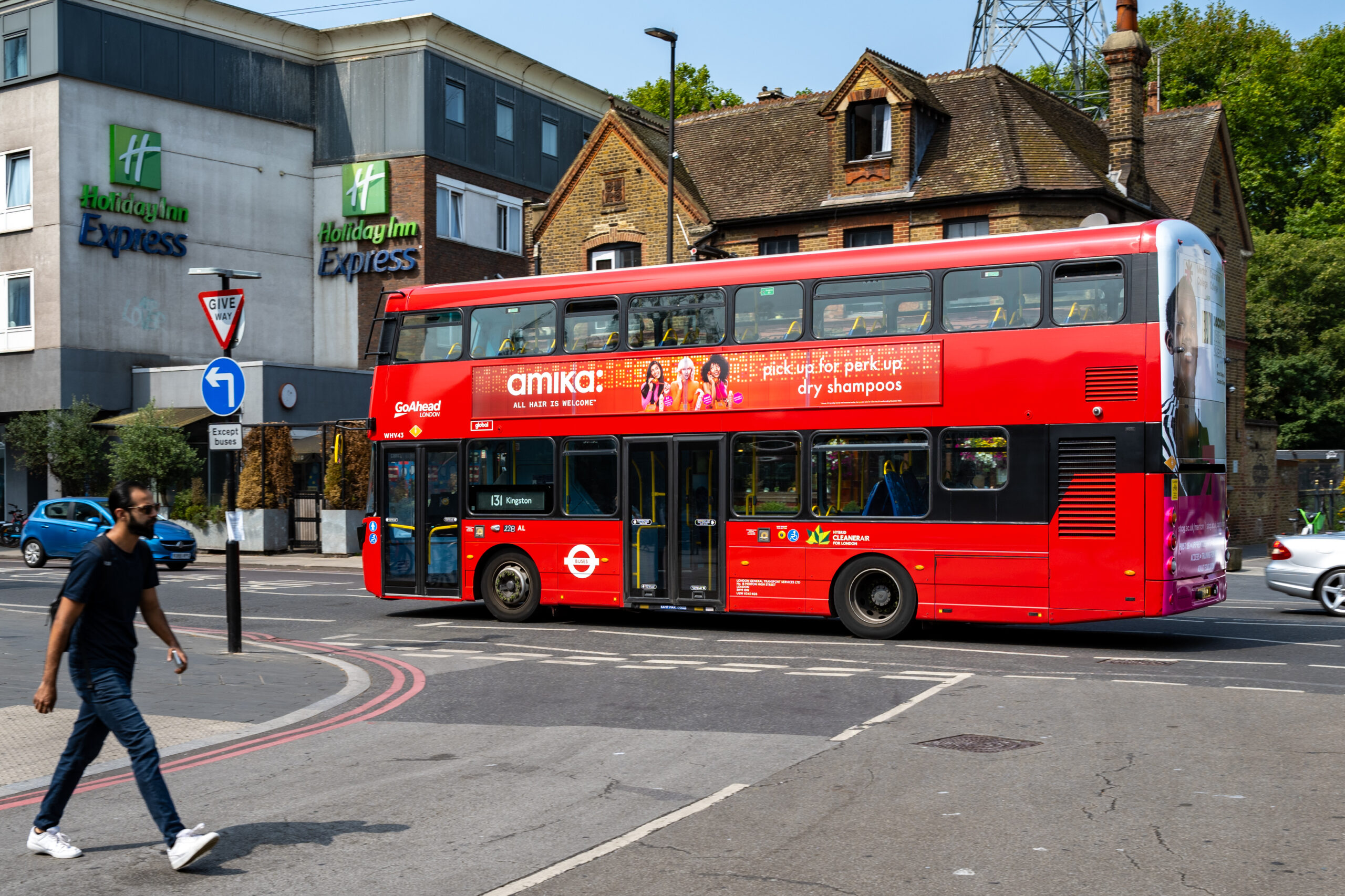
The contextual relevance of transport advertising adds another layer of effectiveness. Evening rush-hour campaigns for food delivery services like Deliveroo align perfectly with commuters’ immediate needs, while morning displays promoting coffee shop apps capture attention when purchase intent is highest.
This synchronicity between physical presence and digital action creates a powerful environment for brands to connect with consumers. By understanding and leveraging commuter mindsets, advertisers can transform passive waiting time into active purchasing moments, making every journey count.
How Transport OOH Sparks Online Action
Today’s transport advertising creates instant pathways to digital engagement through strategically placed calls-to-action. When commuters encounter a compelling ad with a QR code at their bus stop or train platform, they can immediately scan and enter a brand’s digital ecosystem—whether that’s downloading a retail app, accessing an exclusive offer, or adding items to their online cart. This seamless bridge between physical and digital transforms fleeting moments of attention into measurable actions.
The power of transport OOH extends beyond immediate interactions through sophisticated geo-targeting capabilities. When a commuter passes an advertisement at Victoria Station, for instance, that same message can follow them through mobile retargeting as they continue their journey. This creates a consistent brand touchpoint that reinforces the original message and increases the likelihood of conversion.
Perhaps most importantly, well-designed transport OOH campaigns create lasting mental imprints that influence future purchasing decisions.
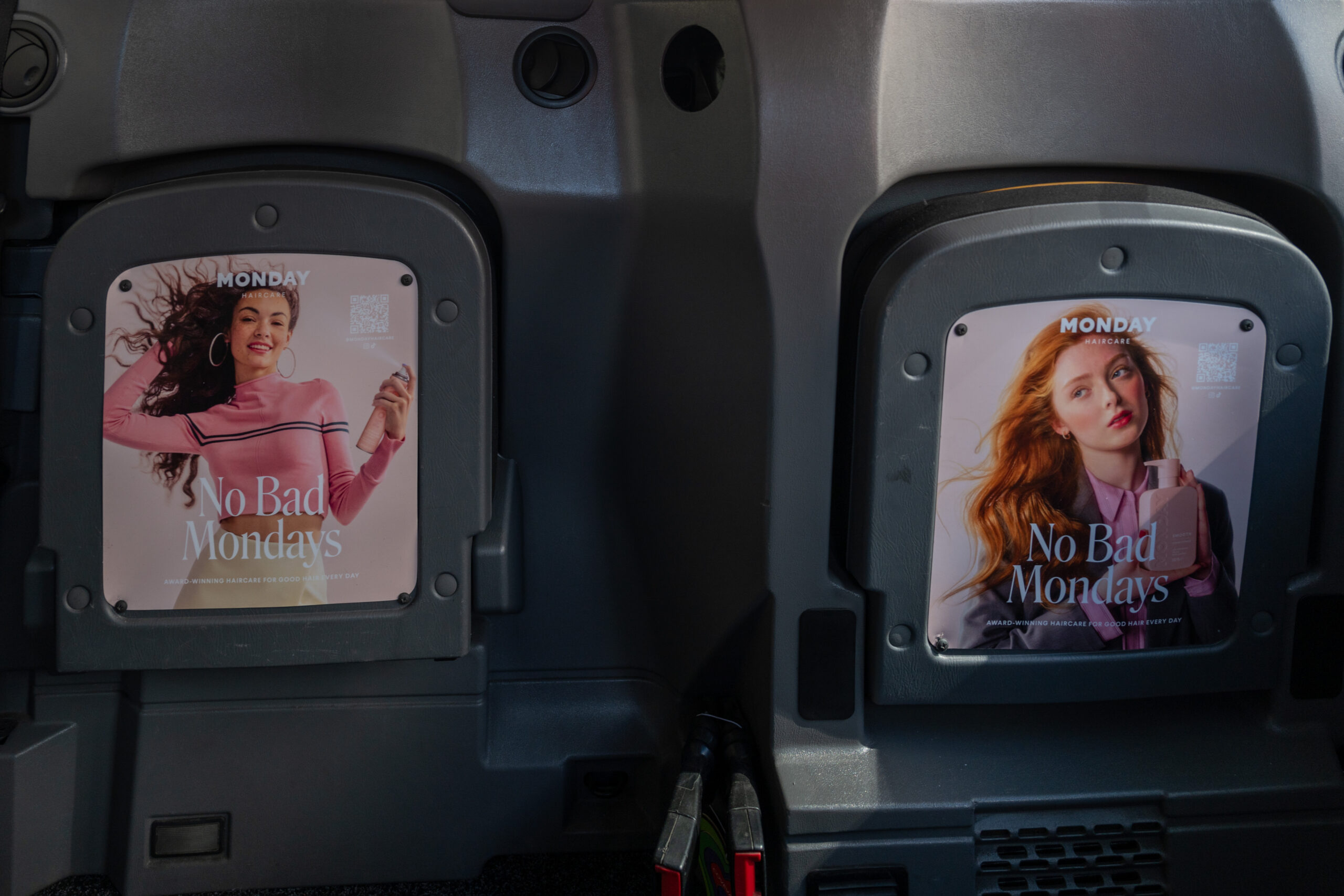
Consider how a striking visual campaign for a streaming service across the London Underground network might not generate immediate subscriptions, but plants a seed that blooms later when the commuter is browsing entertainment options at home. Research from the IPA shows that commuters often perform branded searches hours or even days after exposure to transport advertising, demonstrating how these campaigns continue working long after the initial viewing.
Transport OOH’s ability to drive digital actions lies in its unique combination of prolonged exposure, strategic placement, and the natural mobile-first behaviour of today’s commuters. By understanding this connection, brands can create campaigns that don’t just catch eyes—they capture clicks.
The Growing Value of Connected Spend
Transport OOH advertising’s influence on digital purchasing extends beyond traditional metrics into what we call the Connected Spend – a powerful intersection of mobile commerce and transport user behaviour. While mobile commerce is projected to account for over £100 billion of UK retail spending by 2025 (representing nearly 40% of the country’s total e-commerce market), the specific opportunity within public transport reveals an even more compelling story about how mobility and shopping behaviour intersect.
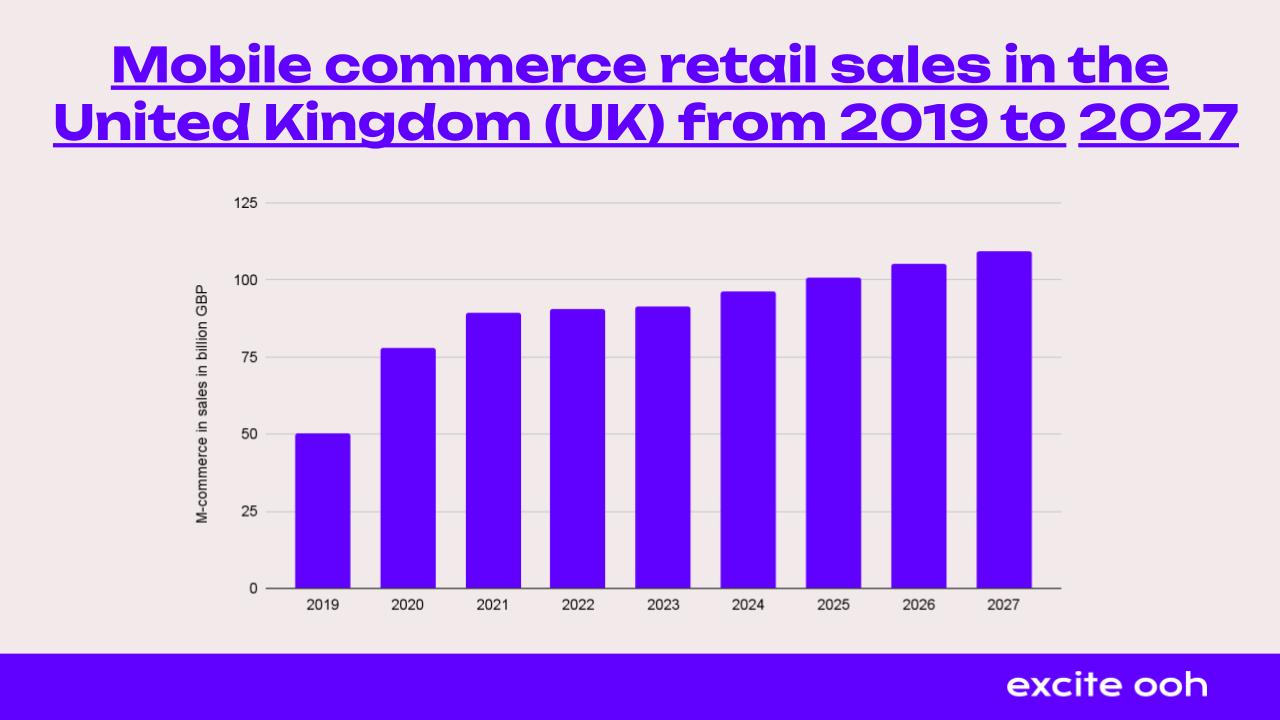
Within the UK’s annual e-commerce spending of £255 billion, we see a fascinating pattern emerge in transport environments. With 26% of public transport users actively browsing retail sites during their journeys, this creates a unique convergence of physical advertising exposure and digital shopping behaviour. This translates into significant numbers: from 141.7 million monthly passenger journeys, approximately 36.8 million involve active retail browsing.
When we analyse the Connected Spend potential more deeply, considering factors such as higher urban disposable income, multiple purchase behaviours, and the impact of targeted advertising, regular transport users who browse retail sites represent between £75-£100 in monthly mobile commerce potential.
The value becomes particularly significant when examined through the lens of cumulative exposure. While each journey represents a modest individual opportunity, the repeated exposure to transport advertising combined with consistent mobile browsing behaviour creates a powerful purchasing pathway. For retailers, this translates to an annual Connected Spend potential of up to £1,200 per engaged transport user.
This £1bn represents just the tip of the iceberg – capturing only direct attributable sales from current transport users. When including indirect influences, brand building, and growth potential, the true opportunity could be multiples of this figure.
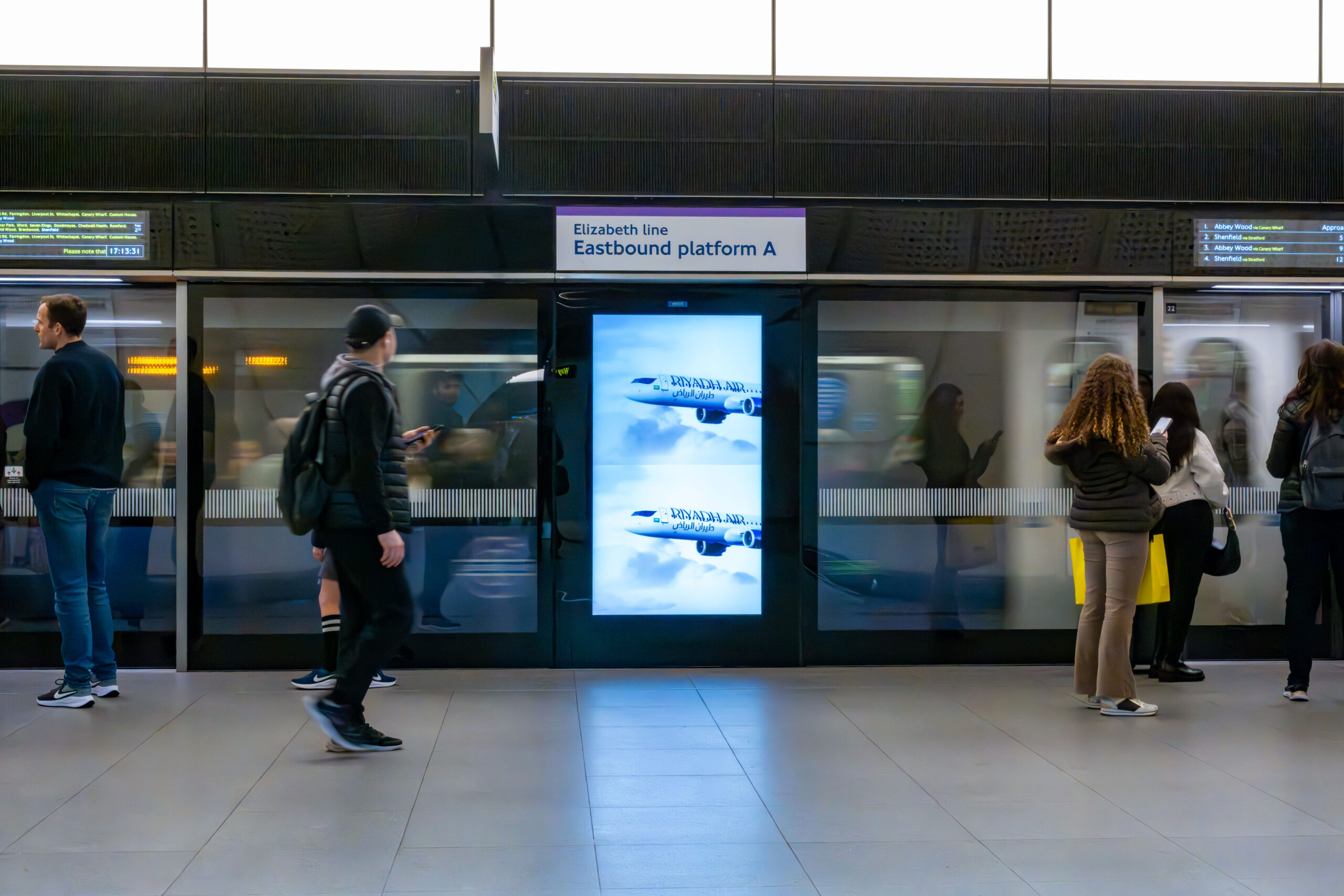
Social media amplifies this Connected Spend further. Transport users frequently share striking OOH campaigns across their networks, transforming static advertisements into shareable social content and extending the digital footprint of physical advertising. This organic amplification creates additional touchpoints that drive mobile commerce engagement.
The synergy between transport OOH and mobile commerce creates a powerful feedback loop within the Connected Spend ecosystem. When transport users encounter advertisements during their journey, their high mobile engagement rates create perfect conditions for immediate online actions. For retailers, this represents an opportunity to tap into a mobile commerce market that’s growing exponentially year over year.
This convergence of transport advertising and mobile commerce demonstrates that brands investing in strategic transport OOH placements aren’t just capturing attention—they’re capturing an increasingly valuable share of the Connected Spend, with measurable and significant returns on investment.

